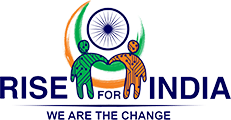
According to children from all over the world, family is the space where they look for maximum support, attention and care. On the contrary due to absence of awareness, skills and capacities to engage with children, caregivers fail to provide a protective environment and at times children are exposed to physical, emotional, sexual violence, neglect, exploitation and other forms of violence by their own caregivers. This is a call to address this issue and engage with families towards creating homes that children can call their ‘home’!
World Health Organization has identified violence against children as a growing public-health issue with a global magnitude. WHO defines violence as “The intentional use of physical force or power, threatened or actual, against oneself, another person, or against a group or community that either results in or has a high likelihood of resulting in injury, death, psychological harm, mal-development or deprivation”.
This definition captures the range of potential and actual violence perpetuated on people, including children, the most vulnerable group. Frequency, severity of harm and intent to harm are not prerequisites for the definitions of violence. States / parties may refer to such factors in intervention strategies in order to allow proportional responses in the best interests of the child, but definitions must in no way erode the child’s absolute right to human dignity and physical and psychological integrity by describing some forms of violence as legally and/or socially acceptable.

Establishing the precise magnitude of child abuse for any given country is very difficult. Even in wealthy countries, recognizing and measuring the incidence of fatal violence such as infanticide is problematic due to under reporting and misclassification of deaths. The situation in developing countries is even more challenging due to a mix of poor health-information systems, faulty legal and police structures, and socio-cultural stigma. Data on non-fatal abuse is even harder to collect because of different legal and cultural definitions of abuse and neglect across countries. Such cases are more under reported even in countries where mandatory reporting mechanisms exist.
The UN Violence Study identified a source of violence against children is the home. The fundamental protective and guiding role of the family is recognized in the Convention on the Rights of the Child. However, for many children the home is a source of violence, where children witness spousal or sibling violence and directly endure abuse (physical, verbal, sexual and/or emotional) by parents, siblings, relatives and other adults.
The Criminal Code provides adults with legal protection from assault, yet permits the legal assault of children by parents and those standing in place of a parent. “When parents do so much [physical violence], kids will end up being violent.” Children consulted for Seen, Heard & Believed:
The prevalence of violence against children by parents and other close family members — physical, sexual and psychological violence, as well as deliberate neglect — has been acknowledged and documented in recent decades. From early infancy until 18 years of age, children are vulnerable to various forms of violence within their homes. Perpetrators vary according to the age and maturity of the victim and may include parents, step-parents, foster parents, siblings, other family members and carers.
Parenting – what does it mean?
Before we go ahead using the word parent let us clarify that it is used for both biological as well as non-biological caregivers. Family comprises those people who are related – usually through blood or marriage – and/or who provide emotional, physical and psychological care to children. This may refer to both a small nuclear family or household, or alternatively an extended kinship network.
Nidhi Pundhir
Director CSR, Head HCL Foundation contact: nidhi_pundhir@yahoo.com
Editors note :
Due to faulty parenting and socialization process, future generation could grow up to be neither socially responsible nor economically productive. Values in youth are shaky due to high risk and deviant behaviour. Every one including Government and Child rights activist are interested only in Rehabilitation & Reformative process, post problems.
Prevention is always better than cure, so it is the need of the day to improve parenting and socialization. We seem to be interested in amendming the Juvenile Justice Act, 2000 but not interested in improving the root causes and psycho-social factors. Grab the initiative now and inculcate Values in your children.


Here’s How A 2 Hour Wait Outside Team India Hotel Taught Me An Important Life Lesson!